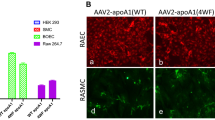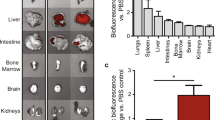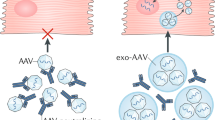Abstract
Water-soluble lipopolymer (WSLP), which consisted of polyethylenimine (PEI, 1800 Da) and cholesterol, was characterized as a gene carrier to smooth muscle cells and myocardium. Acid–base titration showed that WSLP had a proton-buffering effect. The size of WSLP/plasmid DNA (pDNA) complex was around 70 nm. WSLP/pDNA complex was transfected to A7R5 cells, a smooth muscle cell line. WSLP showed the highest transfection at a 40/1 N/P ratio. WSLP has higher transfection efficiency than PEI (1800 and 25 000 Da), SuperFect, and lipofectamine. In addition, WSLP has less cytotoxicity than PEI (25 000 Da), SuperFect, and lipofectamine. Since WSLP has cholesterol moiety, it may utilize cellular cholesterol uptake pathway, in which low-density lipoprotein (LDL) is involved. An inhibition study with free cholesterol or low-density lipoprotein (LDL) showed that transfection was inhibited by cholesterol or LDL, suggesting that WSLP/pDNA complex is transfected to the cells through the cholesterol uptake pathway. To evaluate the transfection efficiency to myocardium, WSLP/pDNA complex was injected into the rabbit myocardium. WSLP showed higher transfection than PEI and naked pDNA. WSLP expressed the transgene for more than 2 weeks. In conclusion, WSLP is an efficient carrier for local gene transfection to myocardium, and useful in in vivo gene therapy.
This is a preview of subscription content, access via your institution
Access options
Subscribe to this journal
Receive 12 print issues and online access
$259.00 per year
only $21.58 per issue
Buy this article
- Purchase on Springer Link
- Instant access to full article PDF
Prices may be subject to local taxes which are calculated during checkout











Similar content being viewed by others
References
Kabanov AV, Kabanov VA . DNA complexes with polycations for delivery of genetic material into cells. Bioconjug Chem 1995; 6: 7–20.
Han S, Mahato RI, Sung YK, Kim SW . Development of biomaterials for gene therapy. Mol Ther 2000; 2: 1–16.
Wu GY, Wu CH . Receptor-mediated in vitro gene transformation by a soluble DNA carrier system. J Biol Chem 1987; 262: 4429–4432.
Wu GY, Wu CH . Receptor-mediated gene delivery and expression in vivo. J Biol Chem 1988; 263: 14621–14624.
Wu CH, Wilson JM, Wu GY . Targeting genes: delivery and persistent expression of a foreign gene driven by mammalian regulatory elements in vivo. J Biol Chem 1989; 264: 16985–16987.
Chiou HC et al. Enhanced resistance to nuclease degradation of nucleic acids complexed to asaloglycoprotein–polylysine carriers. Nucleic Acids Res 1994; 22: 5439–5446.
Wagner E et al. Transferrin–polycation conjugates as carriers for DNA uptake into cells. Proc Natl Acad Sci USA 1990; 87: 3410–3414.
Wagner E et al. Influenza virus hemagglutinin HA-2 N-terminal fusogenic peptides augment gene transfer by transferrin–polylysine–DNA complexes: toward a synthetic virus-like gene-transfer vehicle. Proc Natl Acad Sci USA 1992; 89: 7934–7938.
Trubetskoy VS, Torchilin VP, Kennel SJ, Huang L . Use of N-terminal modified poly(L-lysine)-antibody conjugated as a carrier for targeted gene delivery in mouse lung endothelial cells. Bioconjug Chem 1992; 3: 323–327.
Midoux P et al. Specific gene transfer mediated by lactosylated poly-L-lysine into hepatoma cells. Nucleic Acids Res 1993; 21: 871–878.
Martinez-Fong D et al. Nonenzymatic glycosylation of poly-L-lysine: a new tool for targeted gene delivery. Hepatology 1994; 20: 1602–1608.
Erbacher P et al. Gene transfer by DNA/glycosylated polylysine complexes into human blood monocyte-derived macrophages. Hum Gene Ther 1996; 7: 721–729.
Choi YH et al. Characterization of a targeted gene carrier, lactose-polyethylene glycol-grafted poly-L-lysine and its complex with plasmid DNA. Hum Gene Ther 1999; 10: 2657–2665.
Kim J-S, Maruyama A, Akaike T, Kim SW . In vitro gene expression on smooth muscle cells using a terplex delivery system. J Control Rel 1997; 47: 51–59.
Kim J–S et al. A new non-viral DNA delivery vector: the terplex system. J Control Rel 1998; 53: 175–182.
Kim J–S, Maruyama A, Akaike T, Kim SW . Terplex DNA delivery system as a gene carrier. Pharm Res 1998; 15: 116–121.
Yu L, Nielsen M, Han S, Kim SW . TerplexDNA gene carrier system targeting artery wall cells. J Control Rel 2001; 72: 179–189.
Affleck DG et al. Augmentation of myocardial transfection using TerplexDNA: a novel gene delivery system. Gene Ther 2001; 8: 349–353.
Havel RJ . Receptor and non-receptor mediated uptake of chylomicron remnants by the liver. Atherosclerosis 1998; 141(Suppl 1): S1-S7.
Shih IL, Lees RS, Chang MY, Lees AM . Focal accumulation of an apolipoprotein B-based synthetic oligopeptide in the healing rabbit arterial wall. Proc Natl Acad Sci USA 1990; 87: 1436–1440.
Lougheed M, Moore ED, Scriven DR, Steinbrecher UP . Uptake of oxidized LDL by macrophages differs from that of acetyl LDL and leads to expansion of an acidic endolysosomal compartment. Arterioscler Thromb Vasc Biol 1999; 19: 1881–1890.
Abdallah B et al. A powerful nonviral vector for in vivo gene transfer into the adult mammalian brain: polyethylenimine. Hum Gene Ther 1996; 7: 1947–1954.
Godbey WT, Wu KK, Mikos AG . Size matters: molecular weight affects the efficiency of poly(ethylenimine) as a gene delivery vehicle. J Biomed Mater Res 1999; 45: 268–275.
Benns JM et al. Folate-PEG-folate-graft-polyethylenimine-based gene delivery. J Drug Target 2001; 9: 123–139.
Han S, Mahato RI, Kim SW . Water-soluble lipopolymer for gene delivery. Bioconjug Chem 2001; 12: 337–345.
Lemkine GF et al. Optimisation of polyethyleneimine-based gene delivery to mouse brain. J Drug Target 1999; 7: 305–312.
Turunen MP et al. Efficient adventitial gene delivery to rabbit carotid artery with cationic polymer–plasmid complexes. Gene Ther 1999; 6: 6–11.
Whitman L, Patzelt E, Wagner E, Kircheis R . Development of transferring-polycation/DNA based vector for gene delivery to melanoma cells. J Drug Target 1999; 7: 293–303.
Nguyen H-K et al. Evaluation of polyether–polyethyleneimine graft copolymers as transfer agents. Gene Ther 2000; 7: 126–138.
Qin L et al. Efficient transfer of genes into murine cardiac grafts by Starburst polyamidoamine dendrimers. Hum Gene Ther 1998; 9: 553–560.
Simons K, Ikonen E . How cells handle cholesterol. Science 2000; 290: 1721–1726.
Gao X, Huang L . A novel cationic liposome reagent for efficient transfection of mammalian cells. Biochem Biophys Res Commun 1991; 179: 280–285.
Nabel GH et al. Direct gene transfer with DNA–liposome complexes in melanoma: expression, biologic activity, and lack of toxicity in humans. Proc Natl Acad Sci USA 1993; 90: 11307–11311.
Gill DR et al. A placebo-controlled study of liposome-mediated gene transfer to the nasal epithelium of patients with cystic fibrosis. Gene Ther 1997; 4: 199–209.
Lee ED et al. Detailed analysis of structures and formulations of cationic lipids for efficient gene transfer to the lung. Hum Gene Ther 1996; 7: 1701–1717.
Lee M, Han S, Ko KS, Kim SW . Cell type specific and glucose responsive expression of interleukin-4 by using insulin promoter and water soluble lipopolymer. J Control Rel 2001; 75: 421–429.
Benns JM et al. pH-sensitive cationic polymer gene delivery vehicle: N-Ac-poly (L-histidine)-graft-poly(L-lysine) comb shaped polymer. Bioconjug Chem 2000; 11: 637–645.
Tang MX, Szoka FC . The influence of polymer structure on the interactions of cationic polymers with DNA and morphology of the resulting complexes. Gene Ther 1997; 4: 823–832.
Maheshwari A et al. Soluble biodegradable polymer-based cytokine gene delivery for cancer treatment. Mol Ther 2000; 2: 121–130.
Lee M et al. Water soluble and low molecular weight chitosan based gene delivery. Pharm Res 2001; 18: 427–431.
Acknowledgements
We thank Thomas B Skidmore and Michael D Skidmore for technical assistance. This work was supported by NIH grant HL65477 and Expression Genetics Inc.
Author information
Authors and Affiliations
Rights and permissions
About this article
Cite this article
Lee, M., Rentz, J., Han, SO. et al. Water-soluble lipopolymer as an efficient carrier for gene delivery to myocardium. Gene Ther 10, 585–593 (2003). https://doi.org/10.1038/sj.gt.3301938
Received:
Accepted:
Published:
Issue Date:
DOI: https://doi.org/10.1038/sj.gt.3301938
Keywords
This article is cited by
-
Anti-Inflammatory Therapeutic Effect of Adiponectin Gene Delivery Using a Polymeric Carrier in an Acute Lung Injury Model
Pharmaceutical Research (2017)
-
Recent advance of pH-sensitive nanocarriers targeting solid tumors
Journal of Pharmaceutical Investigation (2017)
-
Cholesterol-conjugated supramolecular assemblies of low generations polyamidoamine dendrimers for enhanced EGFP plasmid DNA transfection
Journal of Nanoparticle Research (2016)
-
Poly(oligo-D-arginine) With Internal Disulfide Linkages as a Cytoplasm-sensitive Carrier for siRNA Delivery
Molecular Therapy (2011)
-
Hypoxia-inducible Vascular Endothelial Growth Factor-engineered Mesenchymal Stem Cells Prevent Myocardial Ischemic Injury
Molecular Therapy (2011)



